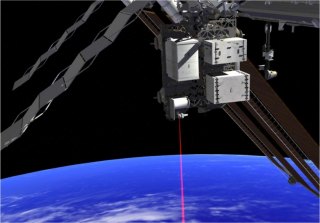NASA In Brief -- Scientists use laser to transmit message (video)

In another show of technology, NASA used a new laser communications instrument to beam a high-definition video from the International Space Station to Earth -- 260 miles below.
The "Hello, World!" video was the first 175-megabit communication for Optical Payload for Lasercomm Science (OPALS). The demonstration allowed NASA to test methods for communication with future spacecraft using a bandwidth higher than radio waves.
Optical communication tools like OPALS use focused laser energy to attain data rates between 10 and 1,000 times higher than current space communications, which rely on radio portions of the electromagnetic spectrum. Because the space station orbits Earth at 17,500 mph, transmitting data to Earth requires precise targeting.
During the June 5 demonstration, OPALS locked onto a laser beacon emitted by the Optical Communications Telescope Laboratory at the Table Mountain Observatory in Wrightwood, California, and began to modulate the beam from its 2.5-watt, 1,550-nanometer laser to transmit the video.
The entire transmission lasted 148 seconds and reached a maximum transmission rate of 50 megabits per second. It took OPALS just 3.5 seconds to transmit each copy of the "Hello World!" video message, which would have taken more than 10 minutes using traditional downlink methods.

